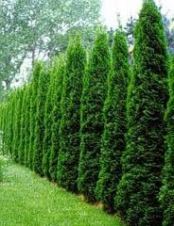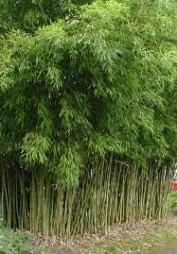Evergreen Scree…
Evergreen Screen Planting for Tight Spaces
Every garden, no matter how large, has a tight space where the property line runs close and the neighbor’s house or another unsightly object looms. Typically, urban side yards are only 5 feet wide, so your bathroom window ends up looking directly into your neighbor’s window, only 10 feet away. What can you do to screen out those undesirable views? Unfortunately, the plant choices are extremely limited because mother nature tends to produce plants that put on spread as they put on height: the taller the plant, the wider it usually is. Moreover, the adjoining roof lines produce shady conditions from dawn to dusk, further reducing plant choices.
If you have a 5 foot side yard and you’d like a path circumnavigating your house, which I always view as a good idea, effectively you only have 2 to 3 feet of space for evergreen screen planting. Here are 4 choices worthy of consideration that I often use in my designs:
Italian Cypress: Although this tree thrives in full sun, it can tolerate a surprising amount of shade.
Emerald Green Arborvitae: This tree is more commonly used than any other plant for screening, and I always joke that it was patented by Lowes Hardware, not designed by God. The only problem is that it does need a fair amount of sun. If it is planted in conditions that are too shady, it goes brown except at the top, where it might receive enough light.
Skyrocket Juniper: This tree has an unmistakably blue color, which makes it tempting to use. However, it prefers full sun and tends to get wider at the base than Italian Cypress or Arborvitae.
Golden Bamboo: Golden Bamboo has two great virtues and one major vice. On the plus side, it thrives in shade and grows taller, faster than nearly all other screen planting choices. On the other hand, it is a spreading bamboo and can spread onto your neighbor’s property even if it is properly contained in a root control barrier.
When I choose the best screen plant for my clients, these are the top candidates I most often consider. Depending on space available, sun-shade conditions and the client’s feelings about maintaining Bamboo, the choice usually becomes obvious, even if it’s not perfect.





